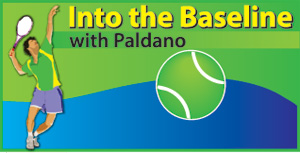Making players for the future
Some kids saw Tennis balls in my possession recently and instinctively said ‘cricket-balls’. Some believe ‘soft-ball-cricket’ could be the reason for the availability of Tennis-balls in Sri Lanka. The number of clubs in the island now is as low as twenty. Without good club level players making a foursome for doubles is a difficult task even in Colombo. Are the few Tennis players in our island the last of the Mohicans? If the opportunity to play the game regularly does not exist, there is no way of improving the playing standard of our players. In the path to improve the game we need good Tennis courts and good local players. Without these two the game is likely to come to a dead end.
 What’s happening?
What’s happening?
What’s happening is the question posed by many who played Tennis their entire life. What seems to have happened is that our emphasis has shifted into big time juvenile coaching, catering to age group Tennis, organizing coaches’ hierarchy and their income which by design is killing Open-Tennis. Our Tennis is now drowned in so called ‘Junior-development’. A road which we took in 1980 to this day has not taken us anywhere. Why kill Open-Tennis? It is not profitable, is the answer. The only time Open-Tennis comes into perspective is when a national team is needed. The plea seems to be ‘good players please appear and disappear after Davis-Cup, Fed-Cup, SAF-Games, Asian-Games.’ Somewhat like the ‘karapincha’ in our food. Strangely enough this approach gets the energy of the nation. In this path none of us will ever see another good player for a long time from the local scene.
This Carry-On series has produced just one player to appear in the top 1000 of the world ranking, mostly with his own family steam and working in Thailand, in the last twenty years. All we have now is juniors learning strokes and very few courts. The lack of appropriate ‘courts’ is a major issue.
Who had the courts?
I did write about the courts issue about one year ago. Some reports say we have up to 15,000 players. No one mentions how many courts we have because it is a very dangerous area to tread. The best count I had was 87 courts. I can be wrong by about 40 but no more. The rain cuts our court usage by a third in a year. The average court use in Sri Lanka is about 5 hours the most. Tennis is a high intensity game and cannot be played to improve or enjoy in the mid day heat. So please don’t use calculators to find out how little we play, the figure will be frighteningly low.
The average could be as low as 10 minutes a year per player. We don’t see serious Tennis being played in this island anymore. All we see is ‘strokes’ being taught to groups of juveniles as if Tennis is a ‘team sport’ where ten to twenty players appear on the court. Most of the children who are going to ‘get coached’ will never ever experience a practice match of three sets in one go. To play good Tennis a player above the age of 14 must play six three set practice matches to consolidate a good game every week. Sadly, I don’t think anybody is getting this.
The original number of courts Sri Lanka had are about 415 in the early 50’s. In 1970 it was about 345. Who had these courts? Recently I spoke to a senior government servant and in the course of the discussion it came to light that the biggest contributor to the game in the last one hundred and twenty-five years is the Government Servants Sports Club. There were more than 75 such clubs in Sri-Lanka. Some had seven Tennis courts and two was the minimum. The sport of the Government servants was Tennis. The day we ignored this segment, which happened from the seventies, with that Tennis as a sport began to vanish slowly from the provinces.
The main role of Tennis is to be a participatory recreational game in a country. The day we stopped encouraging the game at recreational level, we reduced the energy flow into the game being played regularly, being discussed, being enjoyed and being sustained. Now we are paying the price for not being able to foresee this situation and today a 15 year old, identifies a Tennis-ball as a Cricket-ball.
Reversing the trend
Countries in Central America which have our weather patterns have found a good method to sustain recreational Tennis and popularize the game very well. If some formula could be found to make covered flood-lit sand courts, Tennis will bounce back into popularity in Sri-Lanka. [not indoor courts] Courts need a top cover to increase hours of play by keeping the sun and rain away. It has also got to be a clay surface to reduce injuries. It has to be lit for late evening play, as our tropical afternoons are too hot and humid. None of it is out of our capability. It is just that we have not been seriously exploring how to revive the game. A plan to make players for the future has still not taken off as far as I could see.
George Paldano, Former int. player; Accredited Coach of Germany; National, Davis-Cup, Federation Cup coach–. georgepaldano@yahoo.com


